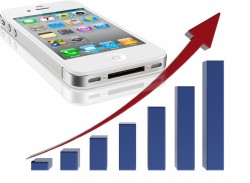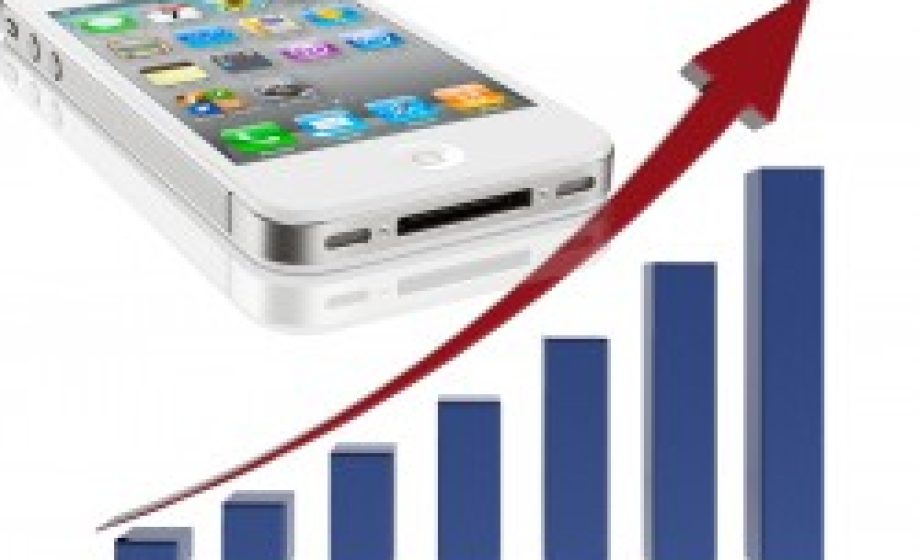 According to the annual French digital economy barometer conducted by the Unversity of Paris-Dauphine and Médiamétrie, France’s digital economy, continues to demonstrate impressive growth. However, there are definitely a few areas of opportunity, and some watch-outs that need to be address. Here are a 3 key takeaways:
According to the annual French digital economy barometer conducted by the Unversity of Paris-Dauphine and Médiamétrie, France’s digital economy, continues to demonstrate impressive growth. However, there are definitely a few areas of opportunity, and some watch-outs that need to be address. Here are a 3 key takeaways:
The smartphone boom is evidence that competition can incite consumers to change their behavior.
Currently 56% of France’s 15+ population have smartphones, which is an increase of 23% from Q1 2012 and a whopping 40% from Q3 2011. The vast majority of these users access the internet from their device, which is an increase of 4% from Q1 and 22% from Q3 2011. In addition, It is very likely that this phenomenon is driven by the entry of Free and the resulting cross-industry drop in total monthly contract prices and, most critically, data access. The barometer finds that approximately 60% of mobile users now have contracts less than 30€/month, with the contracts priced between 11€ – 20€ and less than 10€ showing the strongest growth, while those priced between 31€ – 80€ appear to be in free-fall So, while all of this shift may not have been directly to a smartphone device, it’s safe to assume that a substantial chunk did. Not only has this revolution given consumers more choice, but it has also motivated them to make a fundamental shift in their behavior.
M-commerce seems to have hit a wall. Given the increasing importance of smartphones in consumers’ lives, someone needs to crack this nut.
As we’ve discussed before, e-commerce is still huge opportunity for France’s digital economy. For example, online purchases seem to show solid penetration here, but still offer areas of opportunity (i.e. only 33% of users purchased online in the month prior to the survey, likely showing an opportunity to address the strong seasonal aspect of ecommerce). M-commerce, however, is really having a hard time getting off the ground here. Apparently, only approx 8% of mobile users have made a purchase from their mobile (presumably recently). This is actually a 22% drop from Q2 2012 and 14% from Q3 2011. FEVAD, show’s slightly better figures with penetration at 14% and it’s likely that these numbers would be better if they included apps / in-app purchases which I suspect were omitted. However, that’s not likely to change the overall story here. With more smartphones, one would think that these numbers would at least be trending positive. Although the barometer doesn’t offer much in terms of answers, it’s likely that this is driven by three significant problems: lack of available and/or smartly designed shopping apps, internet speed (still a major problem in France as discussed here), and the simple feasibility of making purchases on-the-go. Of course, we’ve profiled a few startups here that are doing a great job of making their mark in this space. However, the fact of the matter is that few retailers have put much effort towards creating a seamless, intuitive shopping experience on mobile.
Rapid growth in social seems to be slowing, although it still has room to grow.
According to their findings, 56% of French internet users aged 11+ have now signed up to at least one social network. While this was an increase of 15% from Q3 2011, this growth slowed some by Q2 2012 to 4%. Although I have seem numbers higher than this in other surveys, there is some evidence that social still has plenty of room to grow her, particularly in terms of drawing the ‘last mile’ users and getting its users more engaged its platforms. Twitter, for example, has witenessed how the high-level of engagement French users on their platform has played a major role in driving their strong growth here. Cultivating this high-level of engagement, should and likely will be at the heart of the social media community’s French-market strategy for the foreseeable future.

